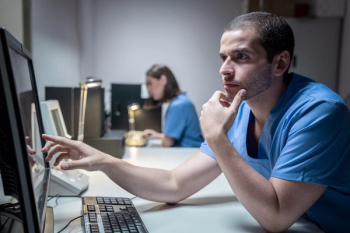
Interventional oncology seeks role within radiology
The importance of interventional oncology to the field of radiology will be evident at McCormick Place in Chicago this year during a four-day symposium held concurrently with the RSNA meeting. The Interventional Oncology Symposium, a collaborative effort with the Society of Interventional Radiology Foundation, will be the first jointly sponsored symposium to take place at the annual meeting.
The importance of interventional oncology to the field of radiology will be evident at McCormick Place in Chicago this year during a four-day symposium held concurrently with the RSNA meeting. The Interventional Oncology Symposium, a collaborative effort with the Society of Interventional Radiology Foundation, will be the first jointly sponsored symposium to take place at the annual meeting.
The groups will address the clinical practice aspects of interventional oncology during the first two days and basic science during the last two. The program will comprise eight organ-based treatment sections focusing on the liver, kidney, lung, and bone. It will also include 12 topic sections ranging from basic principles of drug delivery and thermal ablation to tumor biology for radiologists, image guidance for oncologic interventions, and catheter-directed therapies. The symposium begins on Nov. 28.
The increased interest in image-guided interventions is mirrored in the RSNA's scientific program. Presentations on radiofrequency ablation could be counted on one hand 10 years ago. This year's program includes hundreds of papers on all forms of tumor ablation, according to Dr. Gerald D. Dodd III, chair of the RSNA scientific program committee.
"In 1996, image-guided intervention in oncology was a research topic. Now it's an accepted standard of care," Dodd said.
The symposium seeks to help interventional radiologists learn cutting-edge techniques and employ them in clinical practice. It will include state-of-the-art lectures, scientific abstracts, CME-type lectures, and panel discussions. Clinicians must understand that this type of research is not necessarily esoteric; it can be used in everyday practice, said Dr. Jean Francois "Jeff" Geschwind, director of cardiovascular and interventional radiology at Johns Hopkins Hospital in Baltimore.
Cancer therapy is moving toward less invasive, more tumor-specific, and less noxious treatments. Interventional oncology marries these approaches, said Dr. Michael C. Soulen, chair of the SIRF research education division.
"The symposium will stimulate interaction and promote new collaborative endeavors that will advance the field of interventional oncology. In view of this, the SIRF will convene a research consensus panel during the RSNA meeting to identify a specific research plan for image-guided therapy of lung cancer," Soulen said.
Newsletter
Stay at the forefront of radiology with the Diagnostic Imaging newsletter, delivering the latest news, clinical insights, and imaging advancements for today’s radiologists.




























